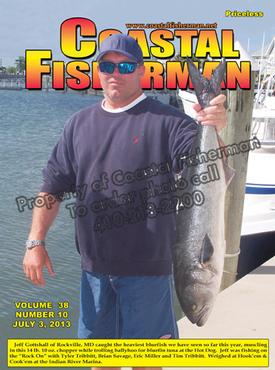


Article by Capt. Steve Katz
 “Which way do I steer?”
“Which way do I steer?”
No, not for my cheeseburger in paradise, but how does my boats steering technically work? Yes, large sportfish boats can often perform amazing maneuvers without touching the helm wheel, but most boaters rely on the helm wheel to change the direction of the boat the entire time the boat is underway. Depending on the size, type and age of your boat you could have one of many different types of marine steering systems. They range from the simple mechanical tiller arm to a computerized electro-hydraulic system. All of these systems need some regular maintenance and inspections to be safe and reliable. Let’s review the most popular systems.
Outboard boats
The traditional mechanical cable system provides good handling performance at a low cost. These steering systems are standardized across the marine industry, using the same size fittings and connections to the engine; they vary by cable length for your specific boat. There are many different variations, such as rotary helm, reduction gear helms, planetary gear and rack and pinion helms. All of these eventually push and pull a cable attached to your engine. The biggest maintenance issue here is grease! Keep your system greased regularly. The tilt tube on an outboard engine is where the steering cable passes through; this must be kept greased for proper operation and to allow disassembly when needed. A replacement steering cable can restore a stiff older system and make it feel like new again.
If you have a high horsepower outboard, multiple outboards or the boat is over 25-feet, a hydraulic steering system is recommended. While this system costs more than a cable system, it has many advantages. The system is simple in design. A helm pump that it pumps the fluid to the steering cylinder(s) (ram) is attached to the engine(s) and interconnected by hydraulic hoses. These systems are not pressurized and only contain pressure while turning the helm wheel. The selection and installation of a hydraulic system is more complicated than a cable system, but once installed, provide low effort steering with little or no feedback from the engine(s).
Annual maintenance is similar to the cable system. Grease the tilt tube and components, check the steering fluid level, check the hoses for wear, kinks or leaks, check the ram for leaks and proper movement and be sure the ram is properly fastened to the engine.
Inboard boats
The most popular system for inboard boats is the hydraulic system, similar to the outboard system but more complex and almost always pressurized. Most boats have multiple helm stations, autopilot, fluid reservoirs and power assist units connected to the steering system. A properly designed system will allow light and consistent helm wheel control in all situations from all steering stations. Regular maintenance is minimal, though with all the devices plumbed into this system, there are many more areas for inspection. Maintenance requires checking the seals for leaks at the helm and ram, checking the hoses and fittings at all connections for leaks, checking the fluid levels and pressure at the fluid reservoir. Each manufacturer of hydraulic steering systems has their own recommendations on the type of steering fluid (hydraulic oil) specified for their system to operate properly. Please familiarize yourself with the correct fluid/oil so if you need to add some you can be sure it is compatible.
A hydraulic steering system is a sealed system. If you need to open the system for maintenance or repair, you will need to bleed the air from the system. This can be a time consuming process, often requiring two people. Each manufacture has specific procedures on how to bleed their system properly. Trapped air in a hydraulic steering system can cause sluggish and inconsistent operation and can cause an autopilot system to malfunction.
Power Steering
The most popular power steering system for outboards is the Mercury Verado outboard system, often adapted by boat builders for use in non-Mercury powered boats. This constant running power-assist pump provides consistent, smooth power assistance to the helm wheel. The newest technology for outboard power steering is the Optimus 360 by SeaStar. This joystick system allows a boat with multiple outboards to control the direction of each outboard independently, allowing extreme flexibility in maneuvering.
Larger inboard boats often use the popular SeaStar hydraulic power steering system. This system used an engine driven, hydraulic pump to provide a power boost for the traditional hydraulic steering system. Viking Yachts has a VIPER (Viking Independent Programmable Electro-hydraulic Rudder) power steering system that allows independent control of each rudder on their larger boats.
These systems require both the traditional maintenance of the hydraulic system above along with maintenance of the electrical components.
Pod Drives
The newest “steering” systems are “pod” systems such as the IPS, Zeus, ZF, Axius and other joystick systems, combining steering and propulsion into one underwater unit. These complex systems are still evolving and seem to be gaining in popularity. Watching the four engines on the 87-foot Spencer “Betsy” equipped with ZF pod drives depart a busy marina’s “T” pier laterally into the channel like it was a video game, demonstrates the potential for these new systems.
Whichever steering system your boat has, proper maintenance and an understanding of its operation can help provide trouble free operation of your boat.
Captain Steve Katz is owner of Steve’s Marine Service serving Baltimore, Annapolis and Ocean City, MD. You can contact Steve at 410-852-3456.